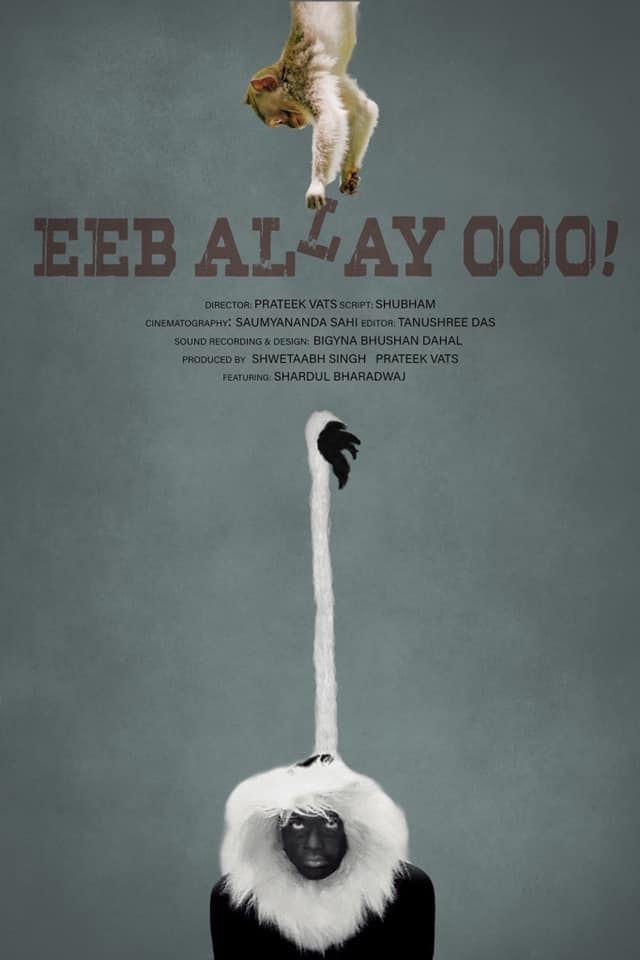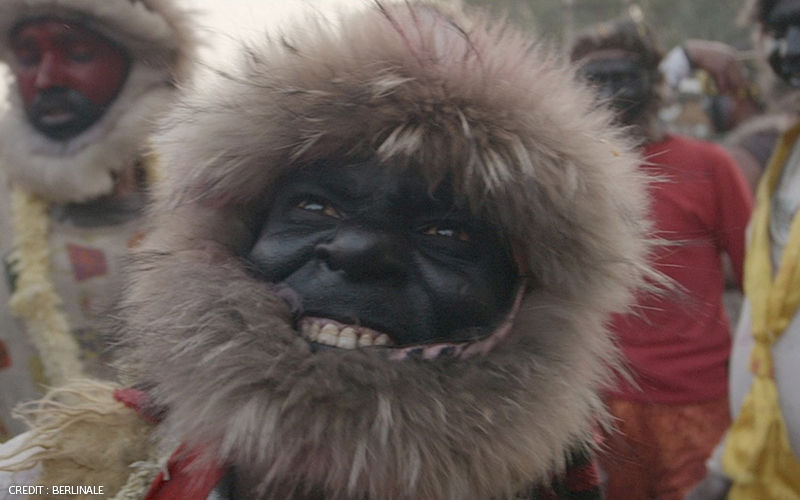“Eeb Allay Ooo” Review: Gods Turning Pests
- ADITI MAZUMDER 2033137

- Mar 4, 2021
- 3 min read

“Kahan narak mein laake phenk diye hain (You have thrown me into hell).” Anjani (Shardul Bharadwaj), the protagonist of Eeb Allay Ooo, tells Mahender (Mahender Nath), his mentor and friend in the unusual monkey repelling business. The phrase sums up what Prateek Vats, the director, manages to do in this feature—he takes the viewers into the veritable netherworld of the working classes in the sprawling urban jungle of the Indian capital. The movie is a social satire that follows a slow progressive speed to advance further. However, it is this aesthetic that provides the film with the angle that it needs to be more and more curious. Anjani is a migrant worker from Bihar and lives with his pregnant sister and brother-in-law in the outskirts of New Delhi. Ultimately, he is stuck at a prized contractual job of mimicking langurs to drive monkeys away and keeping them from public buildings.
Prateek Vats explores politics, nationalism, religiosity, bigotry and struggles of the working class in a non-judgemental tale about Delhi’s primate repelling business. The satire that Vats aims to establish in the film exceeds its expectation. The amazing direction and cinematography makes it seem as if one’s watching a documentary at one point and an absurdly aesthetic component of fiction.
With witty humour and slow build-up, the movie mirrors a world where young migrants looking for a job and a secure future, end up facing inner fears, a deep sense of frustration and indescribable humiliation that builds an insane anger and bitterness within. Anjani struggles day in and day out to make ends meet, feeling robbed of his own dignity, tries to work around it by using some creative ideas but gets chastised for being inventive. Gradually the film acquires a darker shade of the absurd and its many unresolved crises, and visual metaphors continue to dazzle and disturb us, much after the film gets over.

The film has an overwhelmingly lived-in feel. It is in the incidental sights and sounds of Delhi. It is in the details of the way the government departments function and in their environment and feel, it’s in the ways that even a walk-on character like the gynaecologist being consulted by Anjani’s pregnant sister—feels straight out of reality rather than fiction. Or in the fleeting look of pride on the sister’s face when she tells the doctor that Anjani has a “government job”, much coveted in the world of the marginalised. The real comes together in the naturalistic performances so much so that it gets difficult to separate the professional actors playing the roles from the real people Vats has woven in the narrative. For instance, Mahender who plays himself in the film. It’s in how Saumyananda Sahi’s camera winds through the narrow lanes of the blue-collar workers’ ghettos as well as flies over the wide expanse of the privileged heart of New Delhi. It is also how monkeys are captured themselves, as the kings of their own world, more human than humans can ever afford to be.
One of the scenes that stood out for us is when Anjani sets bananas as bait for the monkeys to lock them in cages, however gets locked up himself as a prank by his co-workers. This representation of a human being captured within a small space that is especially made to capture monkeys is really shivering; not to mention the method acting done accurately by Bhardwaj. It makes us viewers as well as Anjani contemplate the feelings of caged animals - like a monkey actually feels when it’s caught and separated away from its family by the most vicious creatures of this planet, humans. Even as the monkeys assert themselves more and more strongly, the humans get further dehumanised.

Vats explores various aspects in a matter of fact, non-judgmental way, which makes it even more scathing a commentary on human and social condition. What stands out the most is the all-round exploitation of the labour and working class, how humans are holding humans captive. Be it a gulel (slingshot) or a gun, nothing can be empowering, each instrument of power renders them more vulnerable. In the light of the current migrant crises, the film acquires an added note of urgency all its own and reaches out in newer ways in these fractured times.






Comments